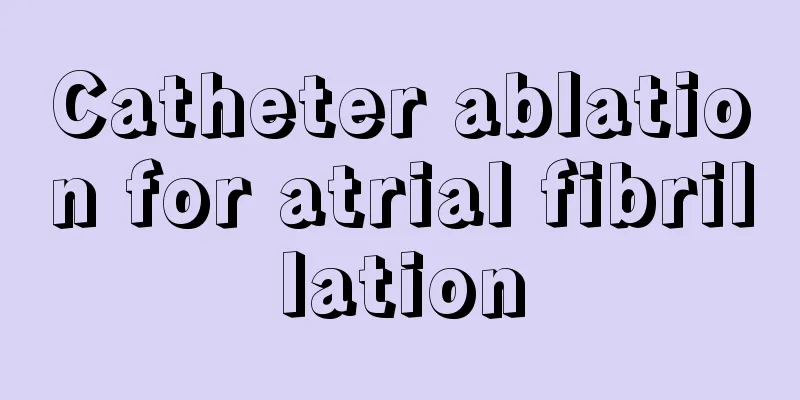Catheter ablation for atrial fibrillation

|
Atrial fibrillation is actually a heart disease that occurs more frequently in the elderly. When atrial fibrillation occurs, patients will obviously feel discomfort around their heart. There are also many physical complications caused by atrial fibrillation, such as shortness of breath and chest tightness. There are many such methods in the treatment of atrial fibrillation. The most fundamental treatment method is atrial fibrillation surgery, among which catheter ablation can also treat atrial fibrillation. The following will explain in detail the therapeutic effect of catheter ablation of atrial fibrillation. Radiofrequency catheter ablation is one of the methods for treating arrhythmias. The operation is performed under the monitoring of an X-ray angiography machine. After puncturing a blood vessel, an electrode catheter is inserted into the heart. The location of the abnormal structure causing the tachycardia is first checked and determined. Then a high-frequency current is released locally at that location, generating very high temperatures in a very small range. Through thermal efficiency, the water in the local tissue is evaporated, causing drying and necrosis, thereby achieving the treatment goal. treat Since the local damage caused by radio frequency current to the myocardium is very limited, about 3-4 mm in diameter and depth, it will not affect the surrounding normal myocardial tissue, so patients generally do not have obvious discomfort during the operation. Most operations are completed in about an hour, and the patient can usually be discharged from the hospital in two to three days. Generally speaking, the following arrhythmias can be treated with radiofrequency catheter ablation: 1. Paroxysmal supraventricular tachycardia is characterized by sudden onset and sudden cessation of palpitations, each lasting from a few minutes to a few hours. The electrocardiogram during the attack can provide a clear diagnosis; 2. Most cases of preexcitation syndrome can be diagnosed by ordinary electrocardiogram. If accompanied by palpitations or atrial fibrillation, radiofrequency ablation should be performed; 3. Atrial flutter and atrial tachycardia are the main manifestations, and the electrocardiogram during the attack can clearly diagnose; 4. Idiopathic ventricular tachycardia without other organic heart disease, palpitations are often accompanied by dizziness, sometimes syncope; 5. Atrial fibrillation includes paroxysmal and persistent types, which cause repeated palpitations and are prone to produce blood clots, significantly increasing the incidence of stroke. Currently, the success rate of radiofrequency ablation for atrial fibrillation is not as high as that for other types of tachycardia, but it is still an important treatment for atrial fibrillation; 6. Patients with obvious symptoms of frequent ventricular premature beats that are not well controlled by drugs. |
<<: Nursing measures for atrial fibrillation
>>: Can I wash my feet after an abortion?
Recommend
How to correct deep overbite of teeth
Tooth overjet is a common clinical problem. It is...
The cause of gastric cancer in young adults is related to increased work pressure
The causes of gastric cancer are mostly related t...
It is normal to gain weight even if you drink cold water
Water is always the best drink, it contains no ca...
Thyroid ft3 is low
The changes in thyroid Ft3 and TSH must be observ...
What are the symptoms of lung cancer in the early stage? Several common clinical manifestations of early lung cancer
For lung cancer patients who act on their own, th...
What are the examination methods for diagnosing gastric cancer?
Some patients always feel uncomfortable in their ...
What is the cause of bone cancer
In recent years, bone cancer has become one of th...
Surgical treatment of kidney cancer
Surgical treatments for kidney cancer include: 1....
No need to check for Toxoplasma if you have passed the Down syndrome screening
Pregnant women usually undergo Down syndrome scre...
What are the symptoms of liver cancer? Introduction to the symptoms of liver cancer
When it comes to liver cancer, many people will d...
What to eat during chemotherapy for bladder cancer
Bladder cancer patients should pay attention to t...
What to do with urine protein allergic purpura
Henoch-Schonlein purpura is very common in clinic...
Purple streaks on your inner thighs?
If adolescent children grow too fast or gain weig...
How to treat a constitution prone to heatstroke
The dog days of summer can be said to be the time...
Can milk shower gel be used to wash the face?
Many of you may have heard of milk baths. In anci...









